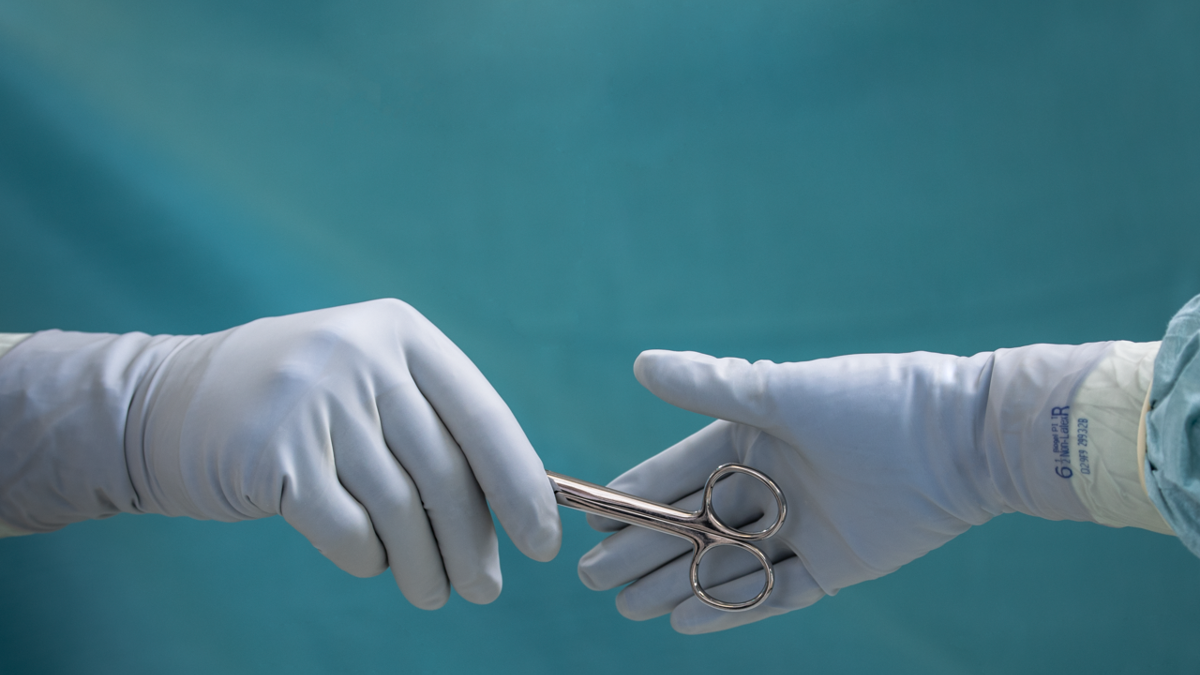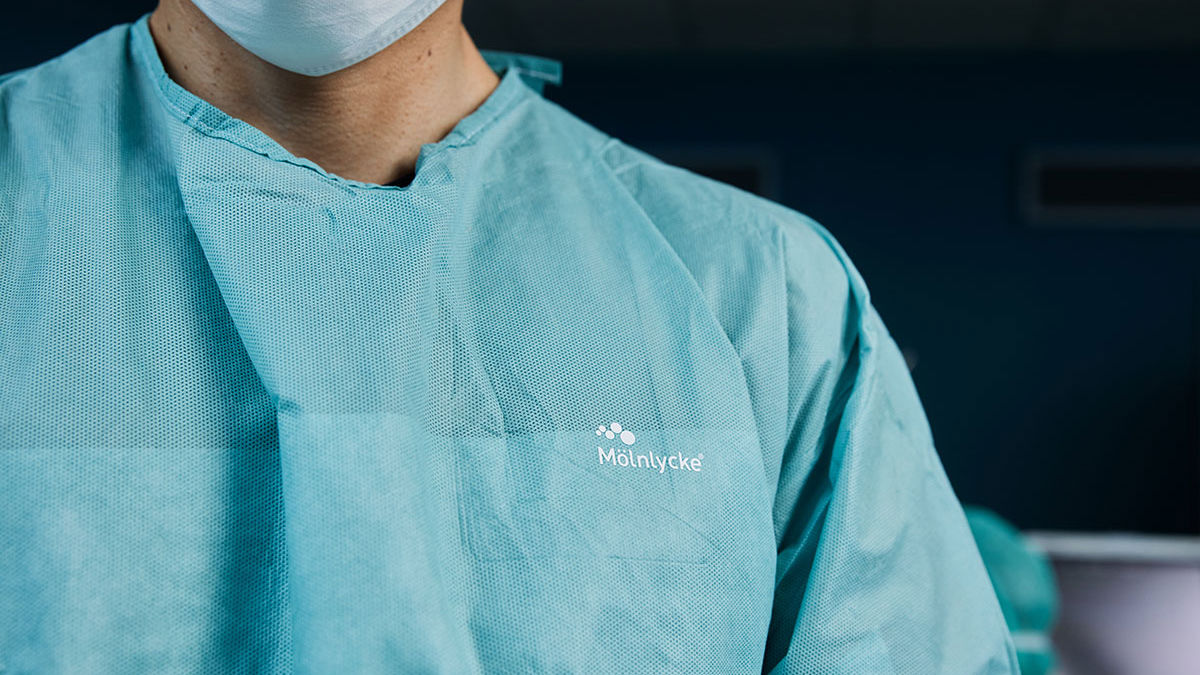-
References
- Anderson DJ, et al. Strategies to prevent surgical site infections in acute care hospitals. Infect Control Hosp Epidemiol. 2014 update [cited14 Sep 2017];35(6):605-627. URL: doi: 10.1086/676022.
- Wright JG, et al. Exposure rates to patients' blood for surgical personnel. Surg. 1993;114(5):897-901.
- The Socioeconomic Impact of Surgical Site Infections. WHO infographic (2016).
- European Agency for Safety and Health at Work (EASHW). Directive 2010/32/EU – prevention from sharp injuries in the hospital and healthcare sector. Bilbao, Spain: EASHW; 2010 [cited 14 Sep 2017]. URL: https://osha.europa.eu/en/legislation/directives/council-directive-2010-32-eu-prevention-from-sharp-injuries-in-the-hospital-and-healthcare-sector.
- Ducel G, et al. (eds.) Prevention of hospital-acquired infections: a practical guide. 2nd edition. Lyon, France: WHO; 2002 [cited 14 Sep 2017]. URL: http://apps.who.int/iris/handle/10665/67350.
- Public Health England (PHE). MRSA information for patients. London: PHE; 2010. Available from: https://www.gov.uk/government/publications/mrsa-information-for-patients [accessed 13 May 2017].
- Neely AN, et al. Survival of enterococci and staphylococci on hospital fabrics and plastics. J Clin Microbiol. 2000 [cited 14 Sep 2017];38(2):724-726. URL: https://www.ncbi.nlm.nih.gov/pmc/articles/PMC86187/.
- Hambraeus A. Aerobiology in the operating room – a review. J Hosp Infect. 1988;11(Supplement A):68-76.
- Howorth FH. Prevention of airborne infection during surgery. Lancet. 1985;1(8425):386-388.
- World Health Organization (WHO). Glove Use Information Leaflet [cited 14 Sep 2017]. URL: http://www.who.int/gpsc/5may/Glove_Use_Information_Leaflet.pdf.
- Junker T, et al. Prevention and control of surgical site infections: review of the Basel Cohort Study. Swiss Med Wkly. 2012 [cited 14 Sep 2017]; 142:w13616. URL: doi: 10.4414/smw.2012.13616.
- van den Tol MP, et al. Glove powder promotes adhesion formation and facilitates tumour cell adhesion and growth. Br J Surg. 2001;88(9):1258-1263.
- Edlich RF. Deadly powder on medical gloves: a wake-up call to the food and drug administration. Bloomington, Indiana, USA. iUniverse; 2012.
- Suding P, et al. Glove powder increases staphylococcus aureus abscess rate in a rat model. Surg Infect. 2010;11(2):133-135.
- Laine T, et al. Glove perforation in orthopaedic and trauma surgery. A comparison between single, double indicator gloving and double gloving with two regular gloves. J Bone Joint Surg. British Volume; 2004;86(6):896-900.
- Mischke C, et al. Gloves, extra gloves or special types of gloves for preventing percutaneous exposure injuries in healthcare personnel. Cochrane Database Syst Rev. 2014 [cited 14 Sep 2017]; (3):CD009573. URL: https://doi.org/10.1002/14651858.cd009573.pub2
- Mangram AJ, et al. Guideline for prevention of surgical site infection. Hospital Infection Control Practices Advisory Committee. Infect Control Hosp Epidemiol. 1999;20(4):250-278.
- Tanner J, Parkinson H. Double gloving to reduce surgical cross-infection. Cochrane Database of Systematic Reviews 2006; Issue 3. Art. No.: CD003087. Available from: http://onlinelibrary.wiley.com/doi/10.1002/14651858.CD003087.pub2/full [accessed 13 May 2017].
- Childs T. Use of double gloving to reduce surgical personnel’s risk of exposure to bloodborne pathogens: an integrative review. AORN J. 2013 [cited14 Sep 2017];98(6):585-596 e6. URL: doi: 10.1016/j.aorn.2013.10.004
- American College of Surgeons. Revised statement on sharps safety. 2016 [cited 14 Sep 2017]. URL: https://www.facs.org/about-acs/statements/94-sharps-safety.
- Michael KE, No D, Roberts MC. vanA-positive multi-drug resistant Enterococcus spp. Isolated from surfaces of a US hospital laundry facility. J Hosp Inf, 2017; 95: 218-223
- Michael K, No D, Dankoff J, Lee K, Crawford EL, Roberts MC. Clostridium difficile environmental contamination within a clinical laundry facility in the USA. FEMS Microbiology Letters, 2016; 363, doi: 10.1093/femsle/fnw236)
- Michael KE, No D, Daniell WE, Seixas NS, Roberts MC. Assessment of environmental contamination with pathogenic bacteria at a hospital laundry facility. Annals of work exposures and health, 2017; 61(9) 1087-1096
- https://www.scirp.org/html/2-2200743_41855.htm
- https://www.sciencedirect.com/science/article/pii/S0195670115001425
- CDC, Guidelines for Environmental Infection Control in Health-Care Facilities, https://www.cdc.gov/infectioncontrol/guidelines/environmental/background/laundry.html
- Blomgren G, et al. Reduction of contamination at total hip replacement by special working clothes. J Bone Joint Surg.1990;72(6):985-987.
- Ljungqvist, B., Reinmüller, B. People as a contamination source. Surgical clothing systems for operating rooms – a comparison between disposable non-woven and reusable mixed material. Göteborg: Chalmers University of Technology; 2012.
- Tammelin, A., Ljungqvist, B., Reinmüller, B. Single-use surgical clothing system for reduction of airborne bacteria in the operating room. Journal of Hospital Infection 2013; 84(3):245-247.
- Hayek LJ, et al. A placebo-controlled trial of the effect of two preoperative baths or showers with chlorhexidine detergent on postoperative wound infection rates. J Hosp Infect. 1987;10(2):165-172.
- Zamora JL, et al. Inhibition of povidone-iodine's bactericidal activity by common organic substances: an experimental study. Surg. 1985;98(1):25-29.
- Huang HP, et al. The efficacy of daily chlorhexidine bathing for preventing healthcare-associated infections in adult intensive care units. Korean J Intern Med. 2016;31(6):1159-1170.
- Edmiston CE, et al. Evidence for a standardized preadmission showering regimen to achieve maximal antiseptic skin surface concentrations of chlorhexidine gluconate, 4%, in surgical patients. JAMA Surg. 2015;150(11):1027-1033.
- Sadakane K, et al. Effect of the hand antiseptic agents benzalkonium chloride, povidone-iodine, ethanol and chlorhexidine gluconate on atopic dermatitis in NC/Nga mice. Int J Med Sci. 2015 [cited 14 Sep 2017];12(2):116-125. URL: https://www.ncbi.nlm.nih.gov/pmc/articles/PMC4293176/.
- Calò , F. Catena, D. Corsaro, L. Costantini, F. Falez, B. Moretti, V. Parrinello, E. Romanini, A. Spinarelli, G. Vaccaro, F. Venneri, Optimisation of perioperative procedural factors to reduce the risk of surgical site infection in patients undergoing surgery: a systematic review. Discov Health Systems 2, 6 (2023). https://doi.org/10.1007/s44250-023-00019-9
- “Assessing the carbon and waste benefits of moving to Procedure Packs at Royal Liverpool and Broadgreen University Hospitals, NHS Trust”, 2011
- Aseptic technique and packaging: A study of potential contamination pathways during the use of sterile packaging in an operating room context, 2016
-
Greiling. A multinational case study to evaluate and quantify time-saving by using custom procedure trays for operation room efficiency. (poster from 2010
-
Aseptic technique and packaging: A study of potential contamination pathways during the use of sterile packaging in an operating room context, 2016
-

Surgical | 3 min read Laparoscopic surgery recovery and post-laparoscopic care
Patients, healthcare professionals and hospital administrators alike see benefits of the laparoscopic surgery healing process.
-

Surgical | 4 min read Surgical gown donning
Why and how to put on a surgical gown aseptically
-

Surgical | 4 min read Surgical product donning and draping
Learn how to don surgical gowns, masks and gloves and drape surgical drapes correctly



